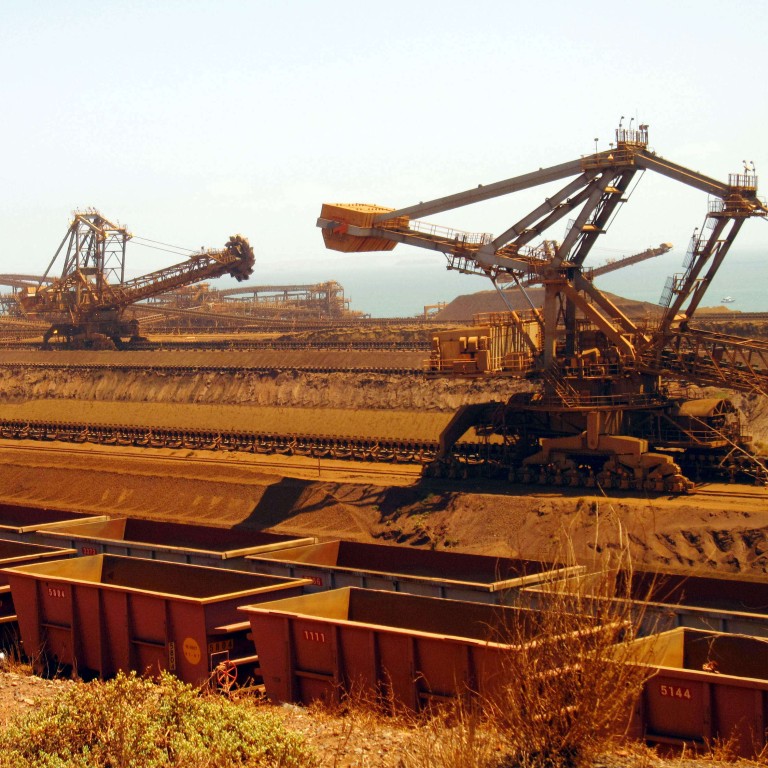
Australian iron imports to China slow but ‘roaring’ demand likely to return, analysts say
- Diplomatic ties have remained icy in recent years, but Australian exports of iron ore had cushioned a complete fall-out in the relationship
- Curbs to steel production, a pursuit of emissions reduction, a crackdown on the debt and growth in the property sector were factors that affected demand last year
China’s imports of Australian iron ore, the bellwether of the trading relationship between the two countries, fell nearly 3 per cent last year as Beijing sought to reduce steel production and carbon emissions.
Diplomatic ties have remained icy in recent years over a range of issues, including Australia’s push for a probe over the origins of Covid-19, but Australian exports to China – iron ore in particular – had cushioned a complete fall-out in the relationship.
Exports peaked in 2020, when China fired up its post-Covid industrial recovery before starting to slow.
Australia to host Quad foreign ministers’ meet amid China tensions
“We think exports of iron ore will continue to struggle in 2022 as China’s GDP growth remains subdued and the Chinese construction sector continues to struggle,” said Ben Udy from Capital Economics after the Australian Bureau of Statistics on Thursday released new trade data.
“This should also see prices of iron ore weaken this year, which will also weigh on export values to China,” the economist added.
Australia exported 694 million tonnes of iron ore to China in 2021, down from 713 million tonnes in 2020, according to the latest data from China customs.
Last year’s imports however remained higher than the volume in 2019 of 665 million tonnes.

While China’s demand for iron ore had been strong for years amid continuous economic growth, last year, curbs to steel production, a pursuit of emissions reduction, a crackdown on the debt and growth in the property sector also known as the “three red lines”, and a power supply crunch showed there were plenty of factors that could threaten the demand, and put major dependent suppliers like Australia and Brazil on alert.
China’s total iron ore imports last year – including the drop in Australian purchases – fell 3.4 per cent to 1.13 billion tonnes, matching a lower steel output of 1.03 billion tonnes which fell from 1.065 billion tonnes the year before, data from the National Bureau of Statistics and China customs showed.
At least for this year, China’s plans to defend its economy in the short term, amid a lingering Covid-19 pandemic and slower economic growth, should partially mitigate any reduction in steel production and consequent emissions, which were longer-term goals, said Navigate Commodities managing director Atilla Widnell.
The amount of liquidity China is pumping in this year will result in roaring iron ore demand in the second half of the year
Widnell said Beijing’s latest messaging – in particular Beijing’s rollover of Special Purpose Bond issuances to fund construction and infrastructure projects and Chinese Premier Li Keqiang’s pledge to lower taxes to support industries facing difficulties – indicated declines in iron ore imports would be muffled this year.
“Iron ore imports were only a small nudge lower, and the amount of stimulus and liquidity China are pumping in this year will result in roaring iron ore demand in the second half of the year,” Widnell said. “The Chinese government has already played their hand for 2022: economy over environment.”
Indeed, China has announced it would make industrial growth its top priority this year, and thus “erased steel output cut requirements in its 2022 decarbonisation policy”, commodities analyst S&P Global Platts said in a note.
China’s property development slowdown would continue but it would be outweighed by more demand for steel in the steadier manufacturing sector, Platts said.
“China’s steel prices saw a roller-coaster ride in 2021 owing to mandatory steel output cuts aimed at reducing the sector’s carbon emissions. Markets are expected to see less volatility in 2022 as similar tough output cuts are unlikely to [occur] this year,” it said.

